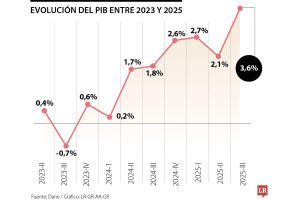The liquidity that fueled 2023’s equity rally is apt to fade this year. What could it mean for your portfolio?
As investors enjoy the market’s recent ascent, many seem to be overlooking a significant risk to its continued performance: a reversal of the excess financial liquidity that has fueled the rally.
What is “liquidity,” and why does it matter? Simply put, measures of liquidity represent how easy it is for companies and households to borrow money and fund their spending and investments. The level of liquidity broadly reflects the amount of money available in the financial system, which can affect the availability of credit as well as the flow of funds and assets prices in financial markets.
Easy Financial Conditions Prevail
Investors have been awash in liquidity lately. Thanks to COVID-era fiscal stimulus and U.S. Federal Reserve bank rescue programs, “M2” (a broad measure of the money supply) has surged since early 2020. To this day, it runs trillions of dollars higher than long-term trends would suggest, although balances are pulling back from a July 2022 peak.
This excess liquidity has created easy financial conditions that helped drive a 25% advance in U.S. equities in 2023. Bullish investors with cash in hand bid up stock prices faster than company earnings grew. All that money sloshing around the system also allowed investors to purchase a mounting supply of U.S. government debt, which included $1.1 trillion in new U.S. Treasury bonds. These were mostly in the form of ultra-short-term bills, which money market funds scooped up in short order.
Excess Liquidity May Soon Dry Up
However, easy financial conditions are apt to fade, as the supply of government debt likely swells even further while investor demand falters.
- On the supply side, U.S. budget deficits are projected to grow from the current level of 6%-7% of GDP – which is already historically high for a period of economic expansion – to 10% of GDP by 2053. Morgan Stanley Research forecasts that the U.S. government will take on more debt than last year, with 2024 net Treasury issuance increasing more than 60% from last year, to $1.8 trillion. Potentially adding another $100 billion to that total are fiscal-2024 budget proposals before Congress that would restore expiring tax benefits for corporate R&D expensing and child tax credits. And all of this comes amid a projected increase in net-new bonds issued by governments and corporates around the world, to an estimated total of $3.5 trillion this year, up from $3 trillion last year and the highest level since 2021.
- On the demand side, investors’ excess funds to absorb all of this new debt are dwindling. The Fed’s regional-bank rescue program, which has helped plug as much as $200 billion in bank balance-sheet shortfalls, is set to expire in early March. Meanwhile, the money market funds that absorbed many of the new Treasury bills in 2023 are seeing less in new flows, as expectations of Fed interest-rate cuts spur investors to take more risk elsewhere in markets. Finally, excess bank reserves have fallen from a peak of about $2.5 trillion to around $700 billion, suggesting M2 money balances are finally shrinking.
What It Means for Investors
This potential supply-demand mismatch could lead to higher inflation-adjusted, or “real,” interest rates. That in turn could put pressure on stock valuations, as higher interest rates may weigh on future earnings. It could also reduce credit spreads – i.e, the additional yield an investor would earn above a comparable Treasury yield for holding a riskier type of fixed-income asset – which could make corporate and municipal bonds less attractive for some investors.
Putting it all together, we expect market performance to stay roughly within current ranges, with mid-single-digit returns likely in U.S. stocks and bonds this year. An economic “soft landing,” if achieved, likely means a normalization of growth and interest rates—not, as many investors hope, a reacceleration of growth fueled by a return to very low rates.
In this environment, investors should build highly diversified portfolios with a focus on active stock- and bond-picking. Real estate investment trusts (REITs), gold, hedge funds, investments in Japan, emerging markets outside China and select European companies are likely to be outperformers.







